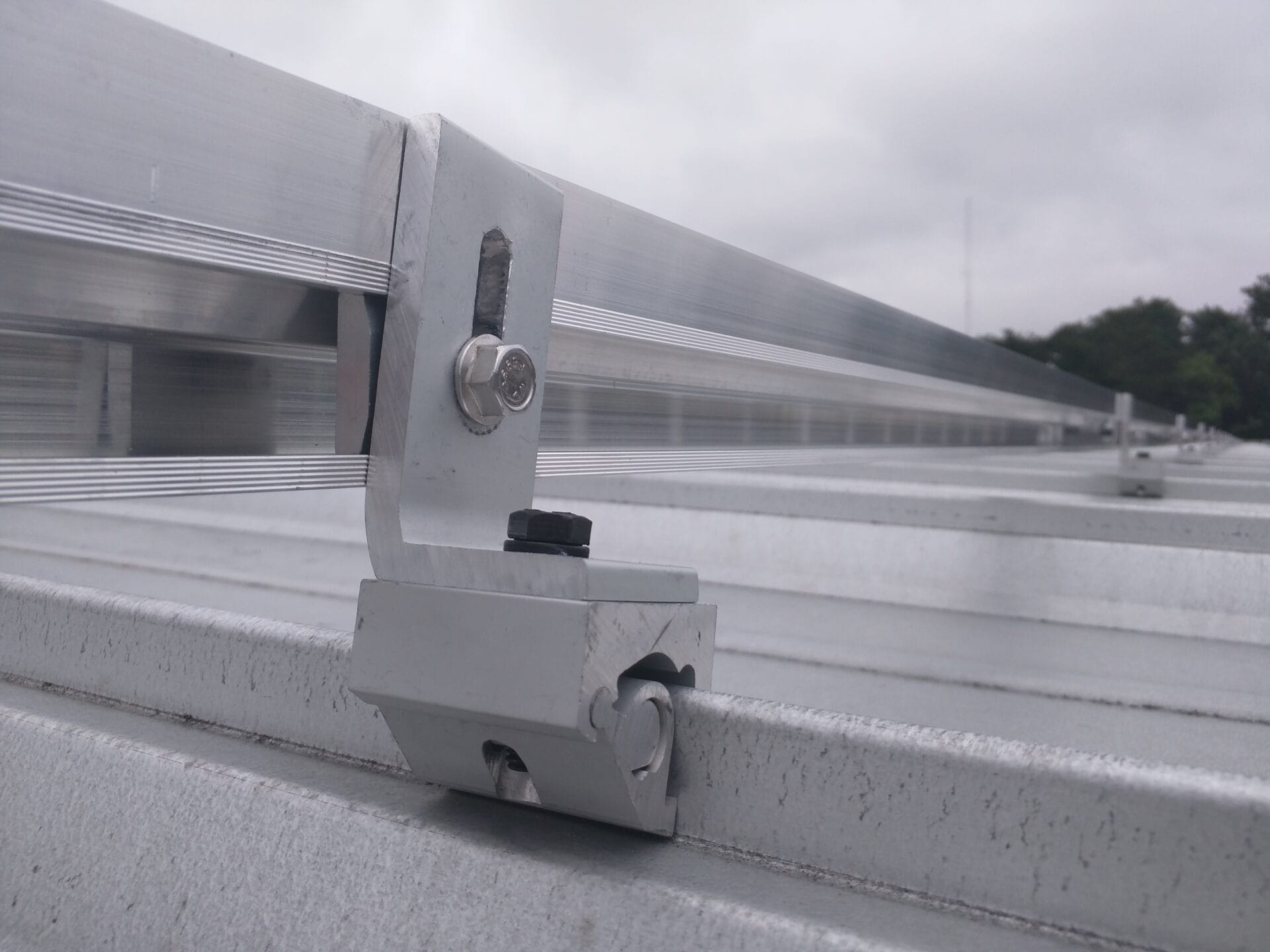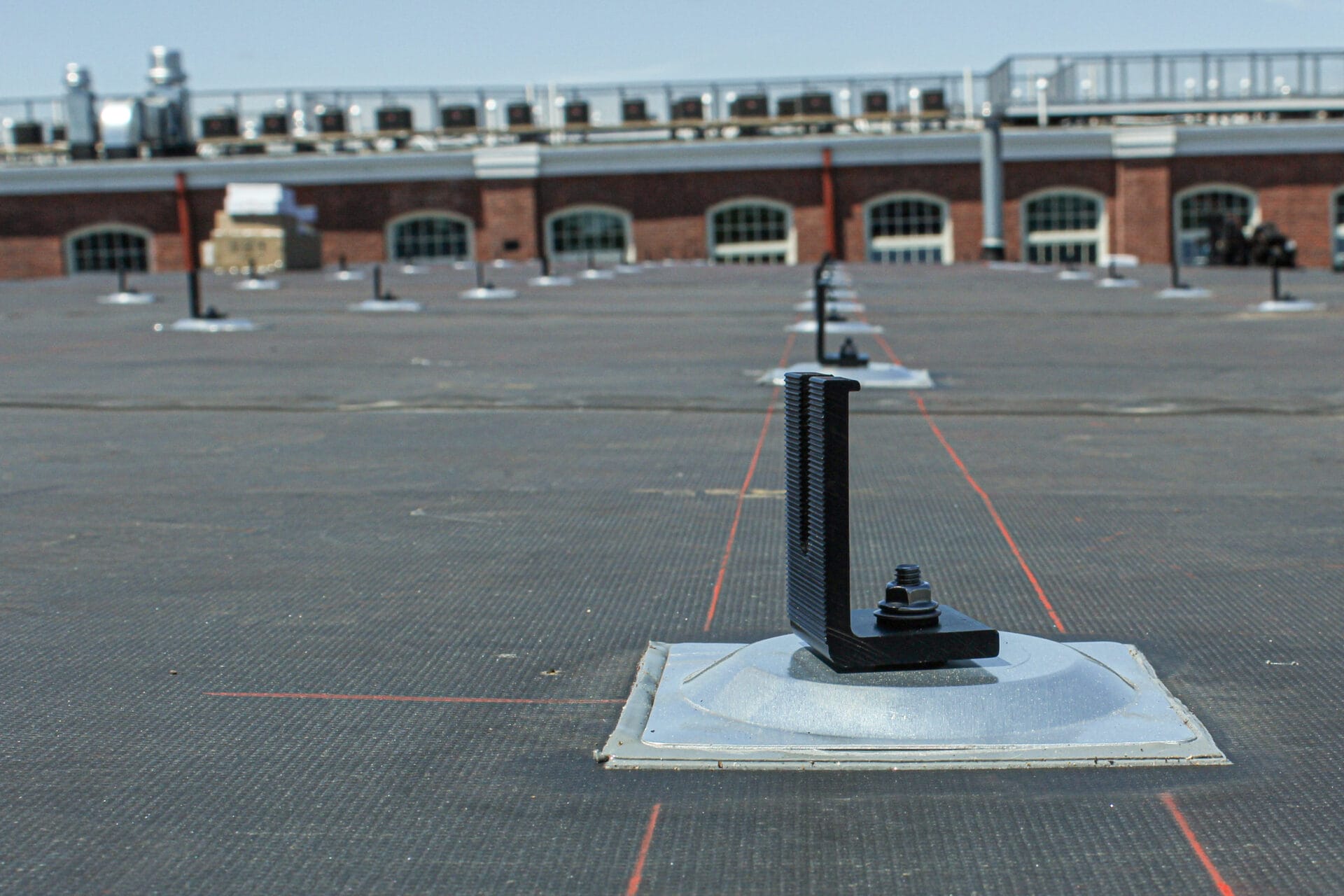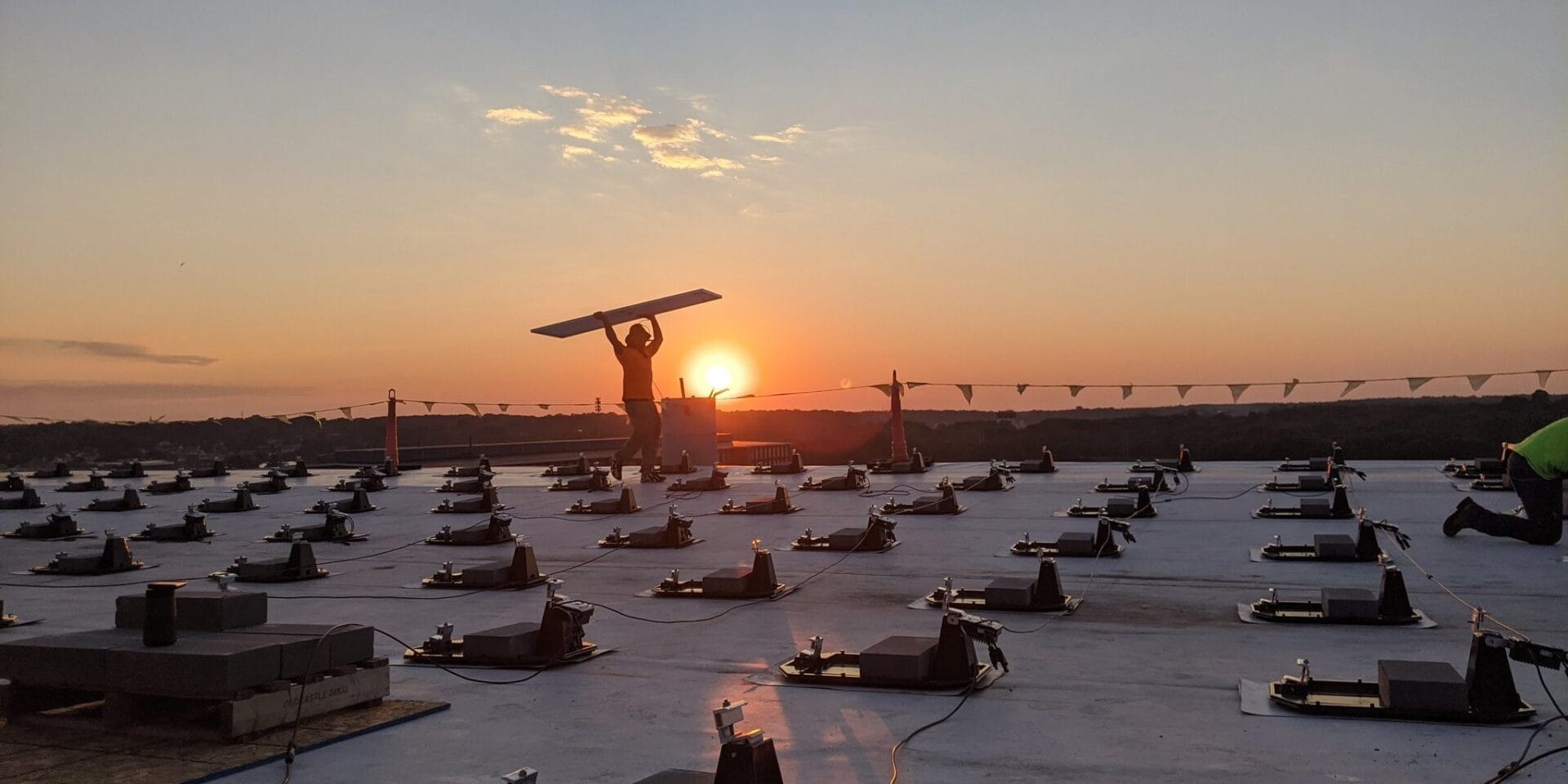Investing in a commercial solar installation is more than just a smart business decision; it’s a commitment to reducing energy costs, enhancing your property’s value, and supporting sustainability. But before we begin, one of the first questions to ask is, “Will my roof handle this for the long haul?” Modern solar panels are built to last 30 years or more, so a durable, well-maintained roof is critical to maximizing your investment. In this article, we’ll guide you through assessing your roof’s readiness, exploring different roof types, and examining options for upgrading your roof to optimize your solar installation.
Roof Age: A Key Factor in Solar Installation
The best time to install a commercial solar system is when your roof is new. Solar arrays often outlast many roofs, and in states like Massachusetts and Rhode Island, the payback period for solar is typically just 4-5 years. With most roofs having a life expectancy of around 30 years, installing solar on a 10-year-old roof could enable your system to pay for itself multiple times before the roof needs replacement.
Roof durability varies widely. Materials like TPO and EPDM are typically warrantied to last twenty years or more, and metal often last well past 30 years, while lower-quality asphalt roofs may need replacement after just 20 years. However, determining whether a roof is ready for solar requires weighing its age and replacement cost against the expected savings from solar energy. Middle-aged roofs present a dilemma, as replacing them early can seem wasteful, however, early replacement may make economic sense in some cases, particularly when factoring in incentives and the long-term savings from solar energy.
Commercial Roof Mounted Solar Panels
The best commercial roofs for solar installations are those designed to support long-term energy systems while requiring minimal maintenance. Systems like ballasted racking or attached racking allow panels to be secured effectively depending on the roof type. For example:
- Ballasted Racking is ideal for flat roofs and minimizes or eliminates roof penetrations.
- Attached Racking is used for sloped roofs or where additional structural support is needed.
Each system has unique advantages based on factors like wind loading, drainage, roof material, and the key technical term – “available collateral load”. Quality installations ensure that drainage, rooftop access, and structural integrity are not compromised.
Ideal Roof Types for a Commercial Solar Installation:
Flat White TPO Roofs
Flat white TPO (thermoplastic polyolefin) roofs are an excellent choice for a commercial solar installation due to their reflective properties, puncture resistance, and lightweight design. These roofs improve solar panel efficiency by reflecting heat, helping panels stay cooler and produce more electricity. Additionally, their lightweight structure ensures minimal added load from solar systems, which typically weigh between 2.5 and 7.5 pounds per square foot.

TPO roofs can support both mechanically attached and ballasted solar installations. For example, in our recent project at Jamestown Distributors in Rhode Island, we mechanically connected the solar panels to the corrugated steel roof beneath the TPO layer. Wooden footings and metal plates were bolted directly to the steel, with careful sealing and heat welding by the roofing contractor to maintain the roof’s waterproof integrity. This approach ensured a durable, long-lasting installation that can withstand harsh weather conditions, including winds up to 135 miles per hour. Learn more about this project here
In other cases, TPO roofs are ideal for ballasted systems, which do not require roof penetrations. These systems use weighted structures to anchor the solar panels, preserving the roof’s integrity and minimizing maintenance. Whether mechanically attached or ballasted, TPO roofs offer flexibility and durability, making them a popular choice for solar installations.

Ballasted Commercial Solar Installation on EPDM Roof
CommercialSolarGuy recently installed a ballasted solar system on the roof of a Harvard University structure located in Cambridge, Massachusetts. The white squares between the solar panels are 32 pound bricks, technically known as ballast.
The basics of how a ballasted roofing system works is simply gravity. Engineers model the building in a computer system, and determine what types of wind speeds must be considered. They then consider the physics of the solar power systems, and suggest a specific amount of weight to hold down the power plant. The “weight” is delivered in specific brick sizes that are a certain shape and density. So they fit just right inside of custom designed solar racking systems.
When considering ballasted systems, your roof’s available collateral load comes into play. The available load is the amount of average weight your roof can handle. A larger roof, with wide unobstructed spaces, can build a larger solar array which can make use of its own size to lower the amount of weight needed. In these cases, some ballasted systems get down to 2.5 pounds of weight per square foot.
In systems with smaller solar arrays, where the weight of the solar cannot be used, systems may require more ballast – and the weights can rise up to 10 pounds per square foot. Or – the system may require tie downs – complementing the ballast.
Metal Seam Roofs
 Metal seam roofs are often the gold standard for a commercial solar installation. These roofs can last up to 60 years and provide a sturdy, long-lasting foundation for solar panels. The beauty of a metal seam roof lies in the special metal roof clamps that allow solar panels to be attached without penetrating the roof, ensuring leak-free performance and long-term structural integrity.
Metal seam roofs are often the gold standard for a commercial solar installation. These roofs can last up to 60 years and provide a sturdy, long-lasting foundation for solar panels. The beauty of a metal seam roof lies in the special metal roof clamps that allow solar panels to be attached without penetrating the roof, ensuring leak-free performance and long-term structural integrity.
Pairing a metal seam roof with a proactive Operations & Maintenance strategy helps maximize system performance and minimize costs. Check out our recent work on a metal seam solar installation in Brewster, MA to learn more.
Asphalt Shingle Roofs
Asphalt shingle roofs are a common choice for commercial and residential buildings due to their affordability and ease of installation. While they can support solar panel installations, their relatively short lifespan—typically 25 to 30 years—makes them a little more nuanced when installing solar power. Installing a solar system on an aging asphalt shingle roof could lead to costly panel removal and reinstallation when the roof eventually needs replacement. For this reason, it’s important to assess the age and condition of your asphalt shingle roof before committing to solar.

Another consideration is the structural strength of asphalt shingles. Proper installation with flashing and sealants is critical to ensure the roof remains leak-free after solar mounting.
SPF Roofs
Spray Polyurethane Foam (SPF) roofs offer exceptional insulation and waterproofing, extending a roof’s lifespan by 30 to 40 years with proper maintenance. Applied as a liquid that expands into foam, SPF creates a seamless, leak-resistant barrier that adapts to the roof’s contours, reducing energy consumption and improving heating and cooling efficiency.

However, SPF requires regular maintenance, including recoating with elastomeric materials like silicone or acrylic every 10 to 15 years to protect against UV degradation. Its durability and energy-saving benefits make it an attractive option, but these maintenance demands should be considered during the decision-making process.
In hot climates, solar panels already provide significant insulating benefits by reflecting sunlight and reducing heat absorption, making SPF less critical. In colder regions, SPF’s superior insulation helps retain heat and lower heating costs. Alternatively, applying spray foam insulation inside a building—such as in the ceiling or attic—can minimize maintenance, avoid UV exposure, and offer comparable benefits with lighter foam formulations.
Retrofitting Flat and Low-Slope Roofs
Flat roofs, while common in commercial buildings, present unique challenges like ponding water, UV degradation, and thermal expansion. These issues can lead to frequent maintenance and premature failure. Retrofitting with a sloped or metal roof system can resolve these issues by improving drainage, reducing maintenance needs, and increasing wind and snow resistance. Our project in Pawtucket, RI demonstrates the importance of flashing installation in ensuring a durable and leak-free retrofit solution.

For businesses that need a new roof before installing solar, CommercialSolarGuy offers flexible solutions. In states like Rhode Island, we can set up an agreement to lease your roof and pay you annually based on the electricity generated. However, we can cut into your annual check to pay the customer up front for a brand new roof and also offer an annual payment. Here is an article we wrote about Rhode Island Rooftop Solar Lease Rates if you would like to learn more about this topic.
For more detailed guidance on evaluating your roof for solar installations, consider reading the following articles written by CommercialSolarGuy’s founder, John Fitzgerald Weaver at pv magazine usa:
Solar 101: Is my roof ready for solar
Residential rooftop solar 101: From azimuth to zoning
Solar 101: Working the angles to maximize your solar system’s output
If you’re considering a solar installation but are unsure if your roof is ready, contact us today. Our team will provide a detailed assessment and guide you through the best options for upgrading your roof to support a high-efficiency solar system.
